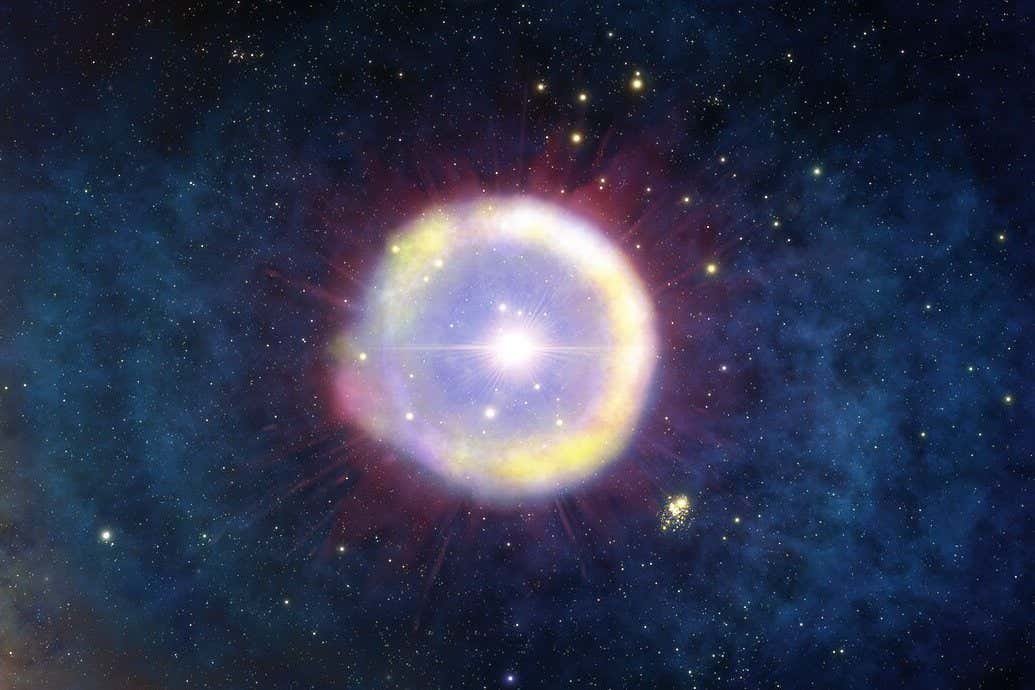
A collapsing massive star forming a black hole after multiple mass loss events.
A study Recent studies have shown that ‘very massive stars’ – stars that have a mass hundreds of times greater than our Sun lose an incredibly large amount of mass before becoming black holes at the end of their lives. This discovery is important for astronomers because it helps us understand how the largest stars evolve and how they eventually turn into one of the most mysterious and extreme objects in the universe – black holes.
What Are Very Massive Stars and How Do They Form Black Holes?
Very massive stars (VMS) are stars whose initial mass is about 100 to 250 times the mass of our Sun or even more. These stars are extremely luminous and emit enormous amounts of energy in their short lifetimes (a few million years). Their enormous energy output is due to the intense nuclear fusion reactions taking place inside them.
Why Very Massive Stars Lose Mass Before Black Hole Formation
Very massive stars lose mass through several processes, the most prominent of which are Stellar Winds These stars emit so much energy and light that their outer layers are constantly pushed into space. This creates a very powerful stellar wind that constantly carries matter away from the star. These winds are much more powerful than the stellar wind of our Sun. Vigorous Convection These stars have such intense convection currents in their cores that they bring heavy elements to the surface. These heavier elements absorb light even more strongly, putting more pressure on the outer layers and accelerating the loss of mass Luminosity near Eddington Limit Very massive stars shine very close to the Eddington limit The Eddington limit is the maximum luminosity a star can produce without collapsing due to gravity.
When a star approaches this limit the radiation pressure becomes so strong that it almost balances the star’s gravity, causing the outer layers to simply fly off into space Pulsations and Instabilities Some very massive stars exhibit a variety of pulsations and instabilities during their lifetimes. These instabilities can lead to explosions in the outer layers of the star causing a sudden loss of large amounts of mass.For example, a very massive star explodes multiple times in a “Pulsational Pair-Instability Supernovae,” loses mass and then eventually collapses into a black hole or completely destroys itself.
Final Stage of Very Massive Stars Before Black Hole Formation
It was thought that the most massive stars simply collapsed into black holes. However new research suggests that they lose a significant portion of their initial mass before this happens. This loss of mass can be so significant that it determines what type of black hole the star will eventually form. If they lose too much mass they can collapse directly into a black hole. If they don’t lose enough mass, they can also experience a “pair-instability supernova” that completely destroys the star with no black hole left or causes it to explode multiple times before collapsing into a black hole.
Why Mass Loss in Very Massive Stars Matters for Black Hole Formation
This discovery has profound significance for astronomy Predicting Black Hole Masses By understanding how much mass stars lose, astronomers can better predict what size black holes stars with different initial masses will form It helps us understand the mass distribution of black holes
Understanding the Early Universe Astronomers thought that the first stars in the early universe (Population III stars) were very massive. how these stars grow and lose mass helps us know how the first black holes formed in the early universe and how they evolve. Understanding Supernovae The loss of mass affects how a star ultimately dies, whether it explodes as a supernova or collapses directly into a black hole. This study helps us understand different types of supernovae Source of Gravitational Waves Gravitational wave observatories (such as LIGO and Virgo) detect waves produced by merging black holes Knowing how black holes form helps us understand the rate and properties of the events that generate these gravitational waves In short, this new research sheds light on how very massive stars can form in the last stages of their lives before they become black holes






